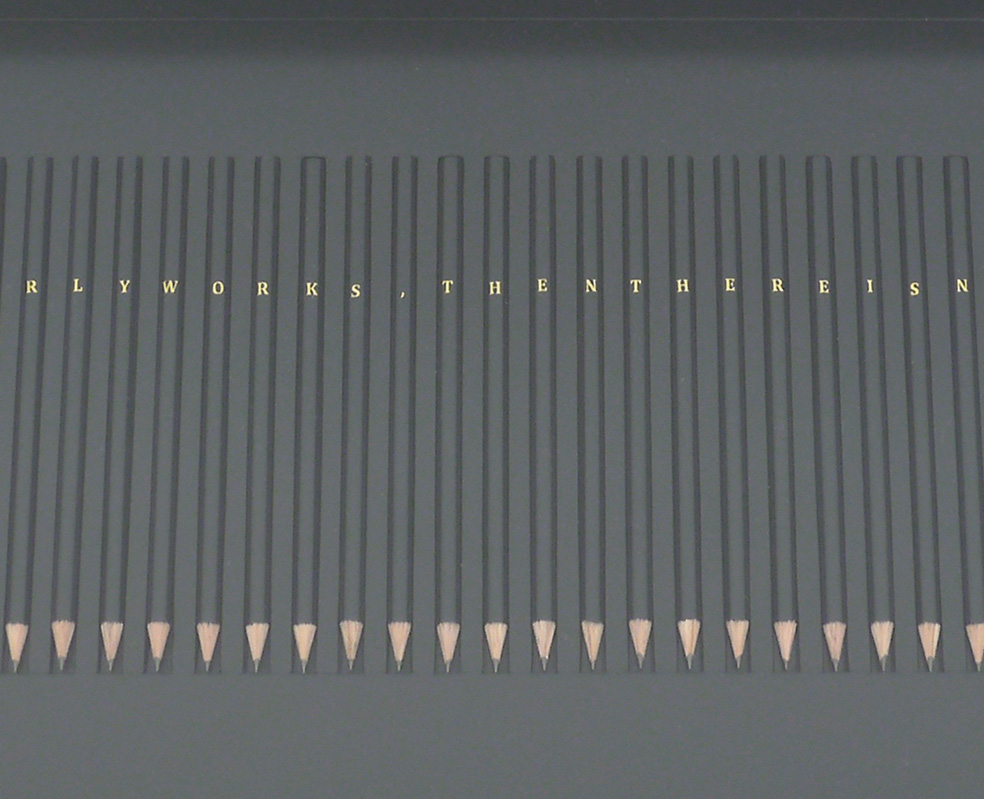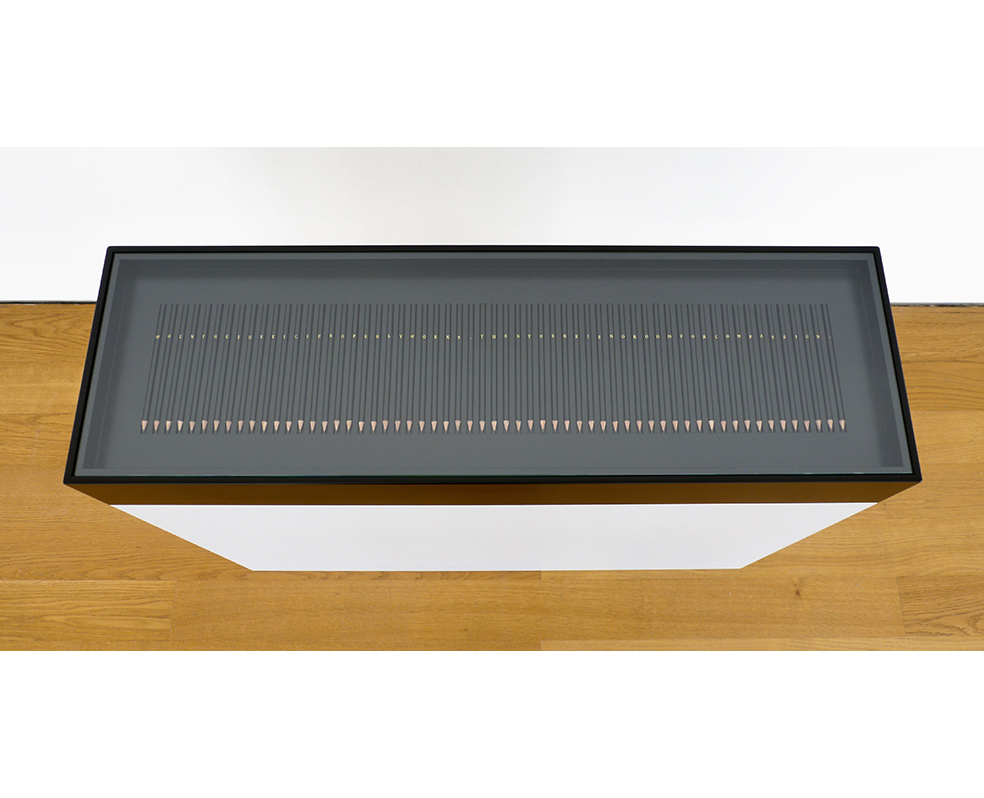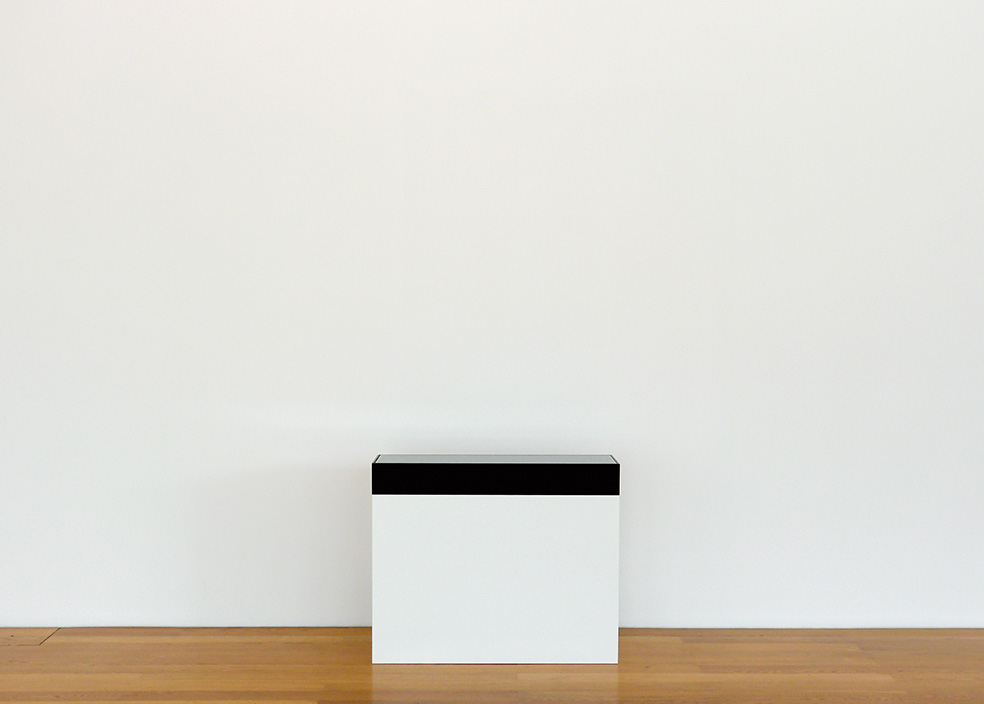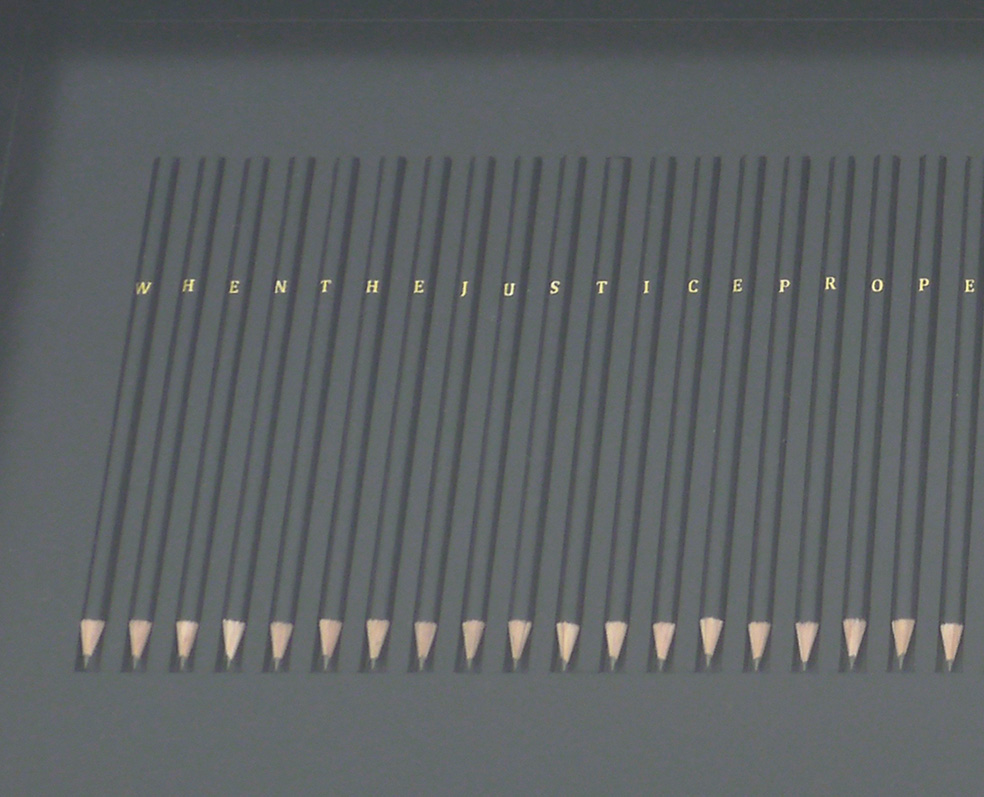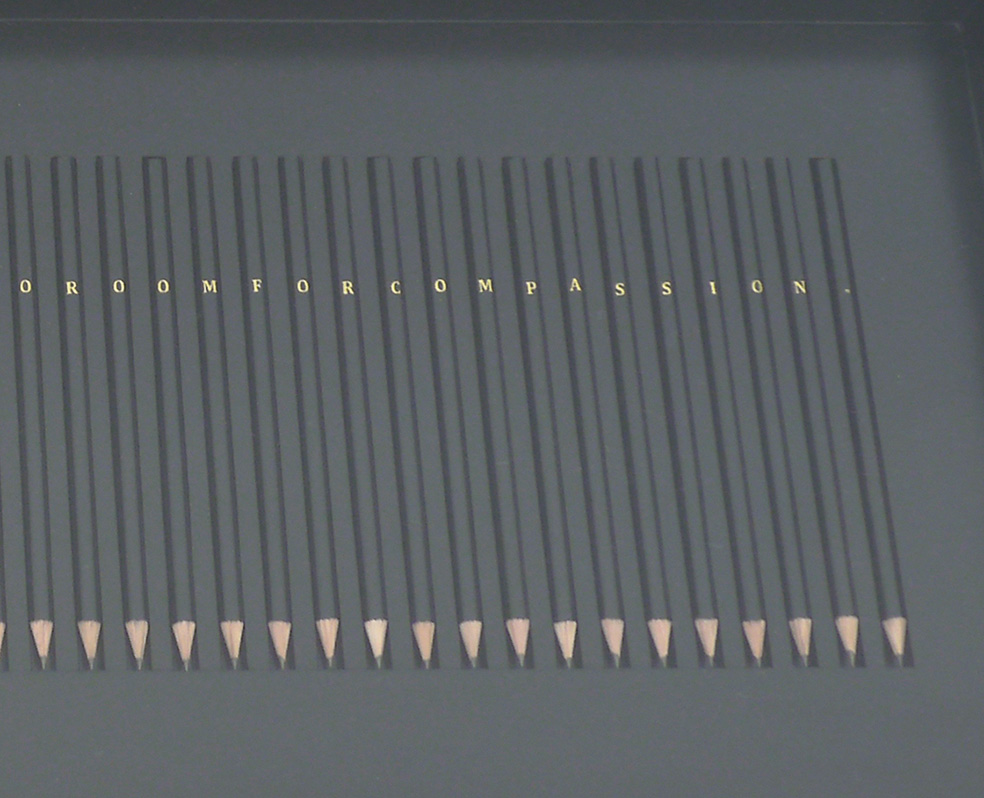When the justice properly works, then there is no room for compassion., 2010
sculpture
painted pencil, painted wood, glass 35x85x105 cm
The work When the justice properly works, then there is no room for compassion (2010) brings together a linguistic form of communication with a historically rigidified gestural one concealed behind it. Formally rigorous in its arrangement, the work consists of a vitrine standing on a base with the same basic dimensions. The black vitrine with its glazed upper side, sits on the lacquered white base and contains fifty-nine accurately sharpened pencils laid out next to one another. A letter or punctuation mark is imprinted in gold paint on each of the pencils so that it is possible to read the title of the work. The sentence When the justice properly works, then there is no room for compassion, which serves as the title, refers to a common practice of judges in Turkey, as well as other countries, of publicly breaking the pen with which a death sentence judgment was signed. Those who do not find such judgments ethically acceptable, despite being required by the legal situation, follow this practice. The symbolic act is expressed in the field of tension that arises between the state function of the judge and subjective assessment of the judgments he or she issues. In this sculptural work, what becomes particularly visible is the strategy that the artist duo often employs of staging the inherent quality of aesthetic experience through evocatively and metaphorically charging it. The formal rigor of the work, as well as the hermeticism, with which the pencils— precisely positioned and distanced from the viewer by means of a massive pane of glass—are presented is associated with the negation of scope for action, although the symbolic reaction of breaking the pencil is still allowed as a minimal, subjective form of articulation vis-a-vis the government. The experience of the work and the social background to which the work refers, as well as the associative relationships that are established between these two parameters, form a lucidly choreographed setting.
Felix Ruhöfer, ars viva 2012 / 13, Systeme / Systems, Exhibition Catalogue, Hatje Cantz Verlag
Installation view; Kunstmuseum Liechtenstein
photos: Günyol & Kunt
